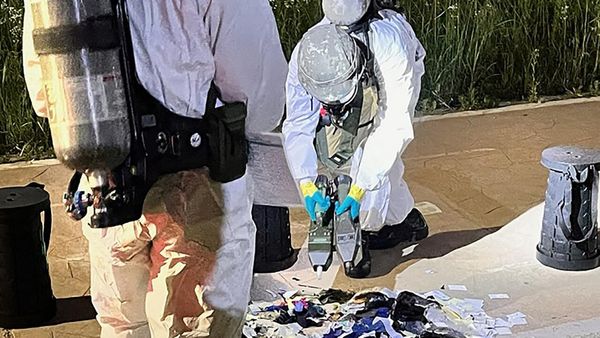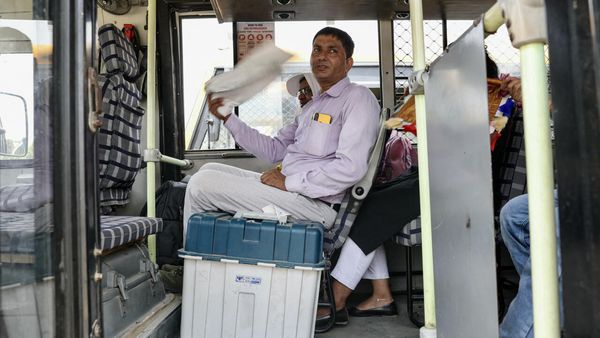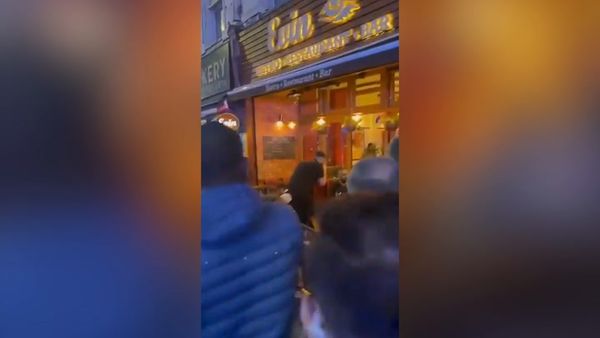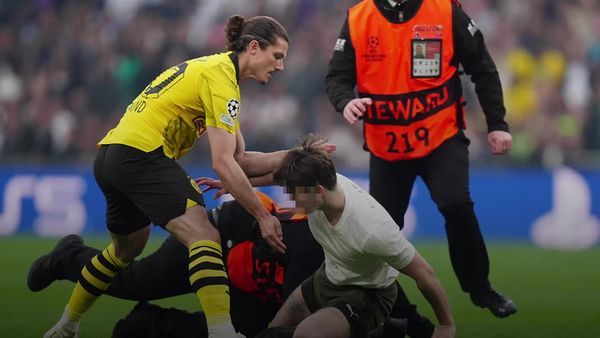
On election night 2016, Van Jones, the criminal justice advocate and former Obama administration official turned CNN anchor, processed his shock on live television. “This was a whitelash against a changing country,” he said. “It was a whitelash against a Black president, in part. And that’s the part where the pain comes.” The clip, in which Jones appeared near tears and essentially called Donald Trump a “bully” and a “bigot”, went viral. For many, it was shorthand for shock and dismay, an articulation of unspeakable anger, and a rare example of a pundit calling it like it was.
So it was confusing that over the next few years, Jones, a Black man from western Tennessee, was seen at the Trump White House, conducted the first (and uncomfortably chummy) TV interview with Trump’s son-in-law/adviser Jared Kushner, and touted his communication with the administration and congressional Republicans in the name of bipartisan criminal justice reform. In spring 2019, Jones appeared at the Conservative Political Action Conference – the Maga hat-filled, far-right convention known as CPAC – as an avowed Democrat willing, for better and for worse and with a considerable amount of controversy, to engage with the opposition. He appeared on stage with the chairman of the American Conservative Union, prompting the question, from myself, from the panel’s moderator and surely from audience members: “Why are you here?”
The answer – the distance between 2016 and 2019, and the messy, at times contradictory journey in between – forms the backbone of the The First Step, a new, wide-ranging and thoughtful documentary on his fraught activism and the bipartisan criminal justice legislation he championed. Created by the brothers team of director Brandon Kramer and producer Lance Kramer, The First Step opens with that CPAC appearance and takes it name from the First Step Act, the bill heralded by Jones and his criminal justice organization, #cut50, that was signed into law by President Trump in 2018. The measure barred punitive practices such as shackling pregnant prisoners, placed inmates in facilities closer to their families, cut down some federal sentences by anywhere from weeks to years and allowed those convicted of pre-2010 crack cocaine offenses to apply for resentencing to a shorter term.
During the initial Trump years, Jones “felt like somebody needed to be engaging and reaching across the aisle and trying to see if there was any sliver of room to get something accomplished on some of the issues where there is some bipartisan support”, said Brandon Kramer. The First Step Act was thus a hodgepodge of reforms and concessions, with a wide range of supporters (people as ideologically opposed as Kamala Harris and Ted Cruz) and skeptics. Some Republicans interested in decreasing mass incarceration backed it; other hardliners, such as the then attorney general, Jeff Sessions, opposed it. Many progressives viewed the measure as too little, too patchwork, one whose passage would allow Republicans to claim criminal justice reform without meaningfully addressing mandatory minimum sentencing laws. Jones’s bipartisan approach – as in, courting Republicans, Jared Kushner and Democrats – drew plenty of critics; the bill was initially opposed by liberal groups including the NAACP Legal Defense Fund and the ACLU.
It also makes for a fascinating, thorny watch, one which, Jones’s occasional foot-in-mouth moments or glad-handing aside, tangles with evergreen questions of political work: incremental change versus radical reform, resoluteness versus compromise, how and when to build a coalition. The Kramers, who worked with Jones on a 2016 web series called The Messy Truth, in which Jones spoke to people across the political spectrum, were interested in someone “going against the grain and doing something really tough and controversial and being able to tell those stories in a really complex way,” said Brandon. “It felt like no matter what would come out of that, it would be a really important document and story for the American public to have.” The First Step began production during the Women’s March in January 2017 and filmed into 2020, as the bill was worked and nearly killed, reworked and nearly killed and then passed, and beyond. “People talk about bridge-building, but it’s very rare that you get to see bridge-building in action,” said Brandon.
The film proceeds along three intertwined tracks: first, the work to pass the bill itself, trying to nail down support from Democrats and attract Republicans with a Trump endorsement, as well as Trump’s Oval Office, on the day of signing. (Jones addresses Trump personally and gratefully.) Second, on Jones’s personal journey to activism, from shy, bookish kid to Yale Law School to fighting to shut down prisons in San Francisco in the 1990s, which convinced him that “you cannot help people en masse with one party or with one race. The only way you’re gonna help is you get everybody together.”
Jones, whose style encompasses hard-won insights (“you can’t fight an opponent you don’t understand,” he says of researching the right), whiffs and bromides in one impassioned mix, is often a besieged island of one; “He who walks in the middle of the road gets hit on both sides,” says the bishop TD Jakes in a phone call with a fatigued Jones. We meet his small #cut50 team as well as some of his prominent liberal critics, from his friend Senator Cory Booker to progressive criminal justice advocates. The First Step Act is “not the law that we need right now”, says the Black Lives Matter co-founder Patrisse Cullors in the film. “This bill is going to jeopardize the work that we’ve done for the last couple decades.”
And third, the film sits in on meetings facilitated by Jones between two grassroots groups grappling with addiction and incarceration: an organization of Black and Hispanic residents from South Central LA besieged by the crack epidemic and the “war on drugs”, and some predominantly white, Trump-voting citizens of McDowell county, West Virginia, reeling from the opioid crisis and cyclical arrests. Each group visits the other; most find common ground in shared trauma and frustration over a system that punishes rather than rehabilitates, if not in justifying the others’ vote in 2016. In one of the film’s most riveting scenes, Jones tries to convince the LA group members to visit Trump’s White House to tell their stories, because the people who shouldn’t be in power will make the trip, and “the right people won’t go” to make an impact. Some do make an uncomfortable visit, greeted by Kellyanne Conway; others view engagement as a bridge too far, certain that Trump and Conway “will find a way to misuse it”.

The tension between engagement and non-engagement, incremental work versus comprehensive reform, course throughout the film with, of course, no definitive resolution. “There are very legitimate and important reasons why to engage, and there’s legitimate and important reasons why some people don’t engage or why they’re fighting for a more comprehensive reform,” said Brandon. “The hope is that you see people who represent your view, but you’re also given a window into a different strategy or opinion or view.”
“It’s valuable for the human experience but also the political process to be able to engage with these kind of narratives but also just paradoxes in this space,” said Lance Kramer of the multitude of experiences and approaches professed in the film. “I think it’s a healing space, when you have that opportunity.”
If anything, the US political environment has only grown more polarized, and the Republican party more untethered from reality, in the years since The First Step was filmed; it can feel weird to watch the film, and its depiction of bipartisan efforts, in a post-January 6 context. But, as Jones and the film-makers point out, there is still a point to political bridge-building. The First Step Act did get passed, allowing thousands of federal prisoners to go home early. The film ends with immediately eye-watering clips of former inmates reunited with their families, months or years ahead of time. “There’s virtues in still trying to get things done and not just throwing up our hands and giving up,” said Lance. “At the end of the day, it’s people’s lives that depend on it.”
The First Step is now available digitally in the US







